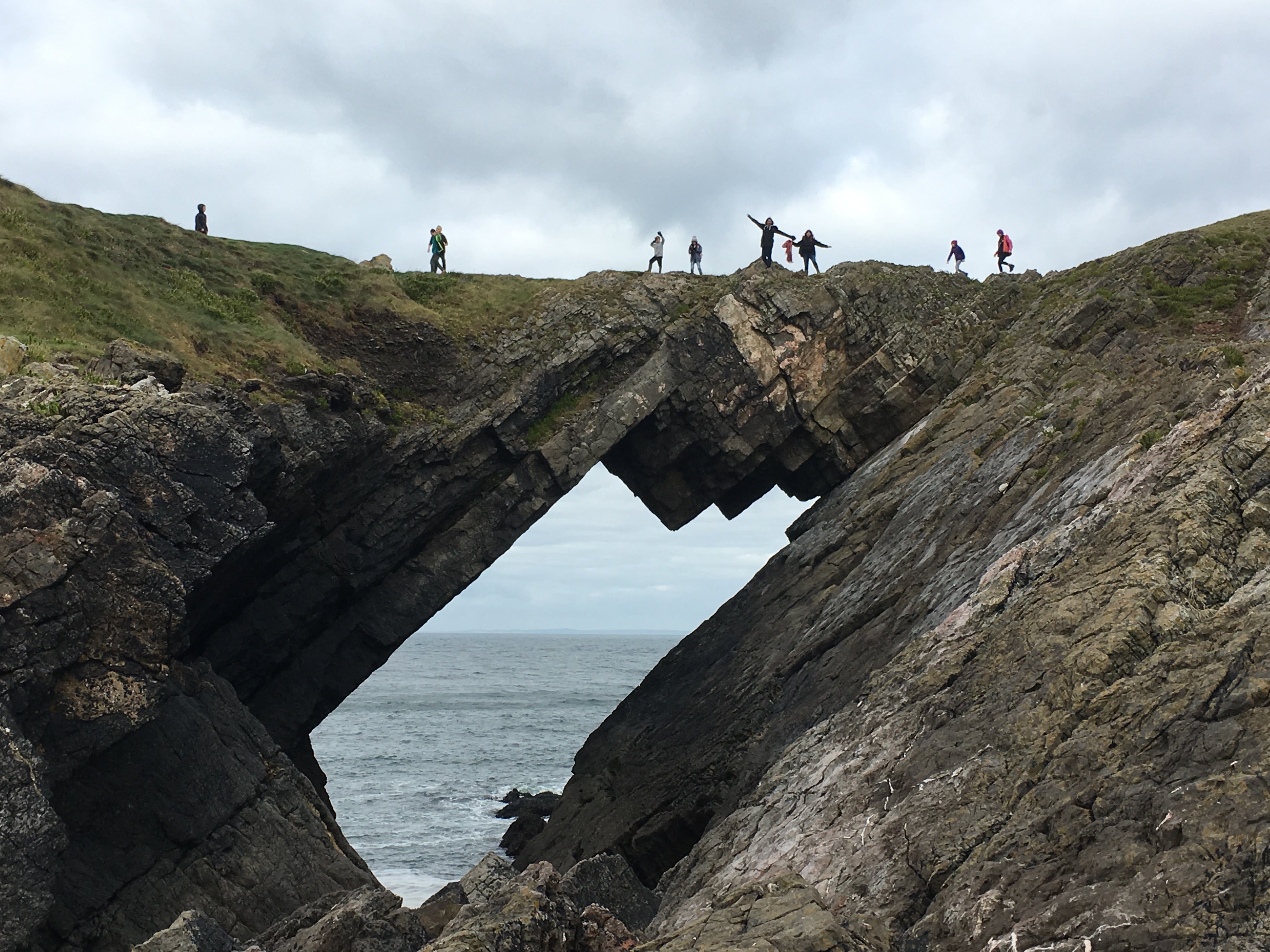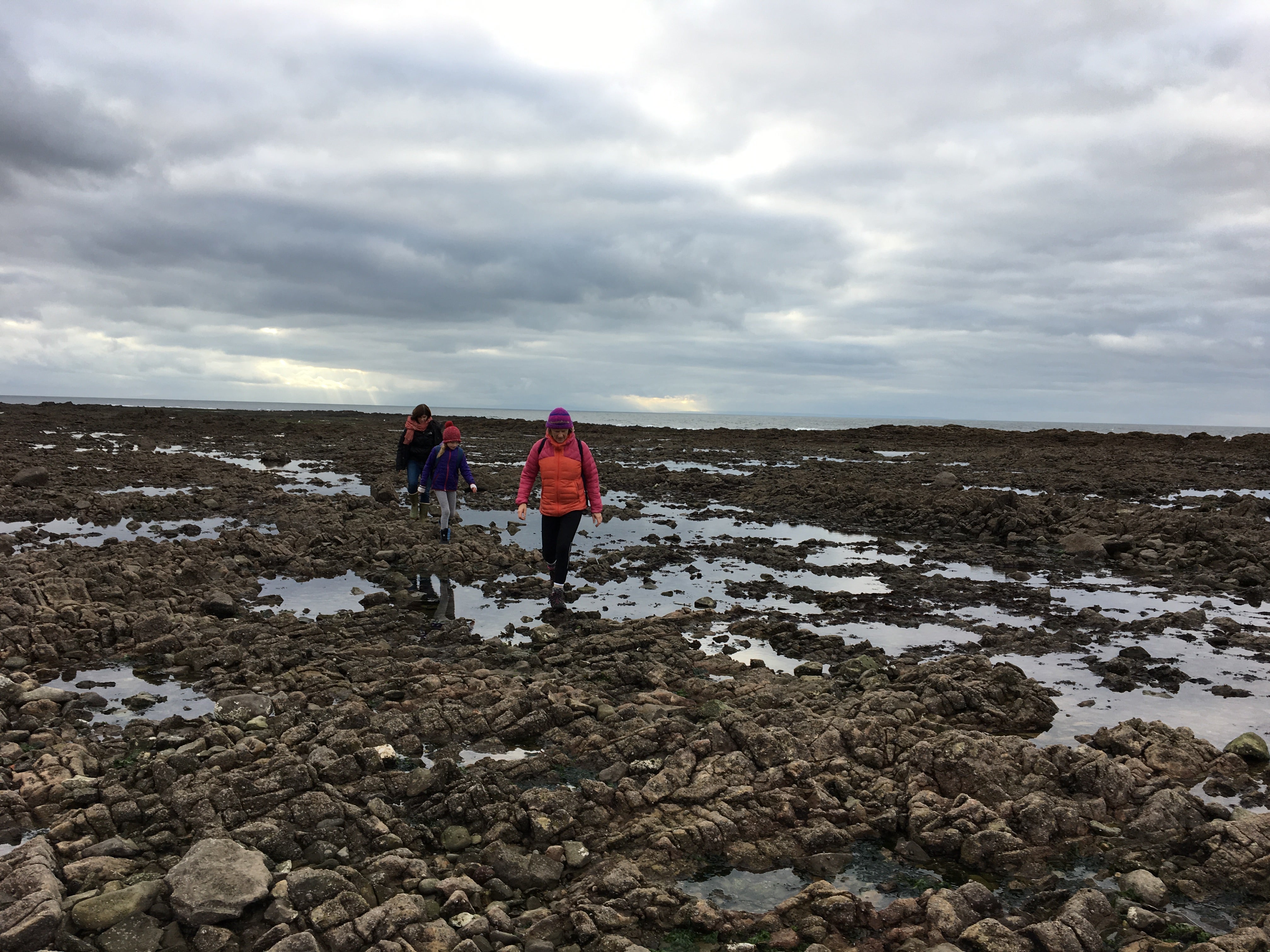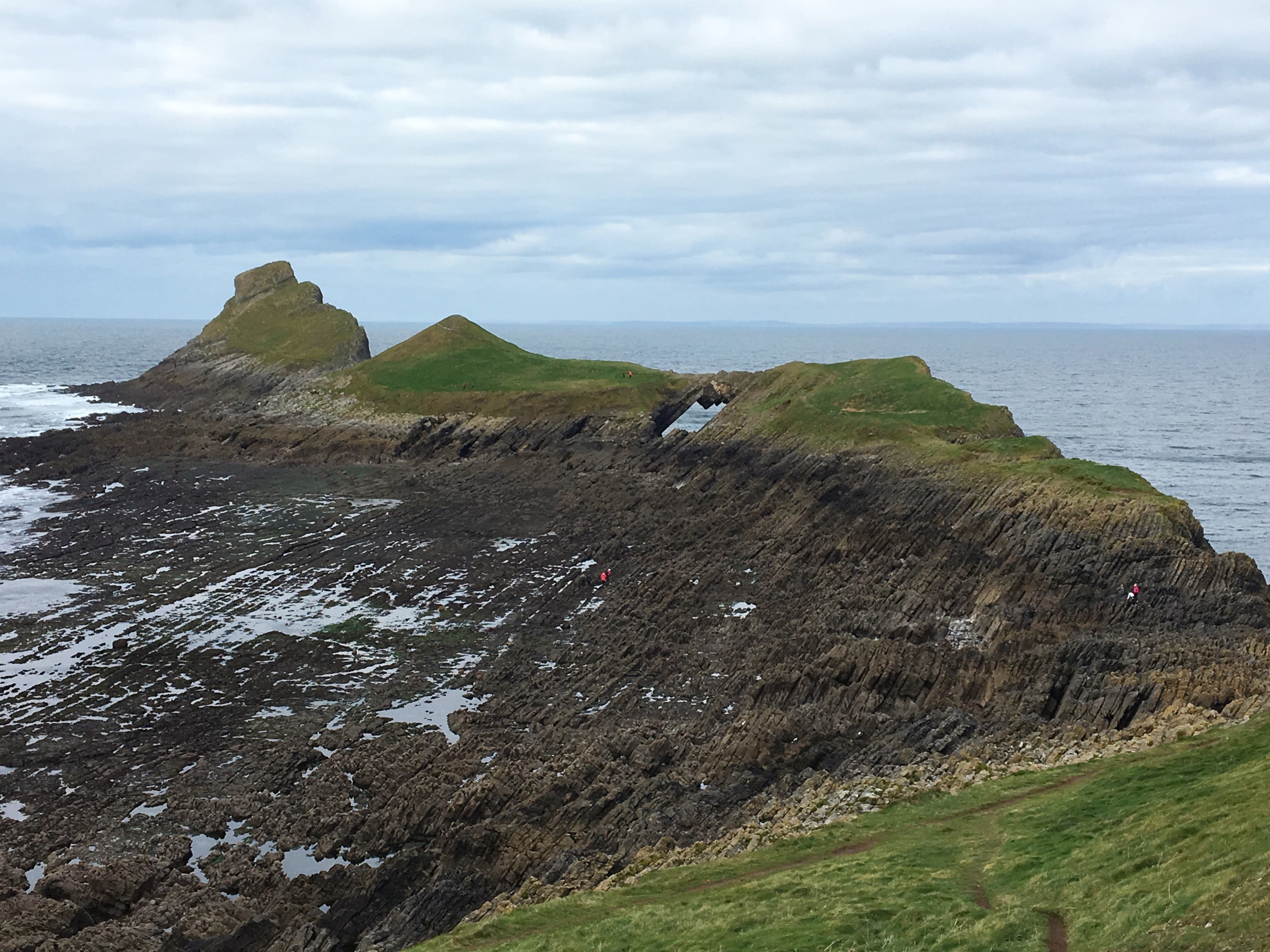Seeking adventure at Worm’s Head, Rhossili’s dragon-shaped island
Hiking to this Welsh headland comes with a tinge of daring thanks to the tide, finds Sarah Rodrigues

We are at the mercy of the moon, with five hours – 2.5 on either side of low tide – to hike out to the tip of the Worm’s Head, at Rhossili on South Wales’ Gower. Some of the world’s highest tidal ranges wash this section of the country’s mythic coastline, submerging the causeways that link “islands” such as the Worm’s Head to the mainland. Five hours sounds generous, but a board at the coastguard’s cottage, manned 365 days a year by volunteers and located at the start of the walk, displays a tally of past rescues, and we have no wish to add to their numbers.
From the carpark at Rhossili, just by the Worm’s Head Hotel, the (disappointingly) well-maintained and easy walk, high above the beach, elicits subversive rumblings from the children. They have been promised adventure and content themselves, for now, with standing as close as they dare to the cliff edge – an activity that gives us, as we grip their arms, the opportunity to admire the golden sweep of Rhossili Beach. Far below us, the sand is pierced by a blackened ribcage: the remains of the Norwegian ship Helvetia, which was wrecked in 1887.
Such a visual reminder of the vagaries of this coastline reignites adventurous enthusiasm – as does the fact that the rather tame-sounding “Worm” is, in fact, a corruption of the Norse ‘wurm’ – dragon. Nothing dull about that.
Allow your eyes to lose focus as you approach the Worm’s Head and, perhaps, you’ll understand how Viking sailors, blinded by sea-glare and maddened by thirst, may have seen the head of a beast rearing from the sea; its snaking back linking it to the mainland. Dylan Thomas described it as “the great rock of the Worm’s Head...At the end of the humped and serpentine body, more gulls than I had ever seen before cried over their new dead and the droppings of ages.”

Lives have been lost as walkers, cut off by the rising tides, have attempted to swim back to the mainland, says Tom John, Royal National Lifeboat Institution (RNLI) Coastal Safety Officer and Lifeguard Supervisor. Others – including a group of seven last summer – have required lifeboat rescue. “It’s a mistake to risk crossing when the water is only ankle-deep,” he says. “It rises quickly and can be waist-deep long before you’re back to safety.” Indeed, Dylan Thomas himself was once forced to spend the night on the head after mis-timing his return; an experience he relives in his story “Who Do You Wish Was With Us?”.
Scrambling down to the fault-lined, limestone causeway from the headland doesn’t require much beyond basic sure-footedness. Even so, this foray into a sometimes-sunken world is thrilling: the contrast between a backdrop-ready landscape, which social media has trained us to believe is there for our convenience, with this jagged reality, which will laugh in the face of photo-taking when the sea sloshes inexorably in. The rockpools teem with life: we spot perfect, tiny starfish, as well as crabs, periwinkles, blennies, anemones and shrimps – denizens of a tidally-revealed Atlantis.
Far below us, the sand is pierced by a blackened ribcage: the remains of the Norwegian ship Helvetia
A steep climb to the summit of Inner Head gives a view over the Worm’s undulating back, sheering away to the sides in tooth-like folds of rock. Far below us, fat grey seals wallow carelessly in the waves; others loll lugubriously on the rocks which, closer to us, are studded with spindly wildflowers. From here, the walk dips down to Low Neck: a savage section featuring jagged wave-cut platforms of limestone, streaked with calcite veins.
Ahead of us, the Devil’s Bridge is all that remains of a collapsed sea cave; it, too, will eventually collapse and this precipitous crossing will no longer be an option. For now, however, we can scramble up and down the Worm’s serrated flanks, both viewing the Bridge from below and taking advantage of the vista offered from its dizzyingly narrow span, above. We don’t catch the angled blast of water from the blowhole at its base, but from the top, we again see seals, while kittiwakes and razorbills bomb the startlingly clear water. From the beginning of March until the end of August, access to the outer headland is closed, in order to protect these and other breeding sea birds.

Just beyond the Bridge, we happen across a low ‘cave’, its missing sea-facing wall providing a window across the water, and we huddle here briefly to deplete our chocolate stash before continuing. We’re aware of the presence of underwater caves beneath us; to the divers in the group, it’s a siren song of a different sort, as maddeningly elusive as the occasional flicking tail of a porpoise.

The final scramble to the tip of the Worm requires some “three points of contact” good sense; and once there, we’re buffeted by winds but replete with a combination of views and satisfaction. The same walk, in reverse, awaits us and, having worked with, rather than against, nature, this feels like a gift, an opportunity to explore a world that is drowned, but – for now, at least – not permanently; a world over which tides still flow and recede.
Travel essentials
Advice from RNLI coastal safety officer Tom John includes wearing appropriate, sturdy footwear and bright clothing for visibility. “Keep your phone safe and dry, in case you need to call 999 for help,” he says. “Additionally, check in with the volunteer at the start of the walk and let them know what you plan to do and how long you expect to be, so that they’re aware of non-returners.”
Join our commenting forum
Join thought-provoking conversations, follow other Independent readers and see their replies
Comments
Bookmark popover
Removed from bookmarks